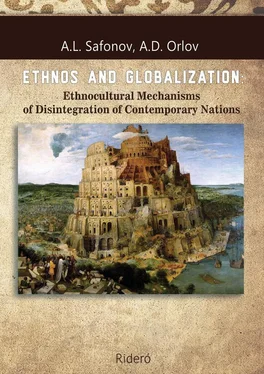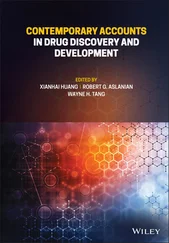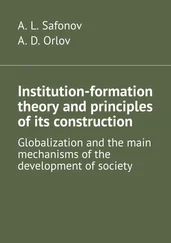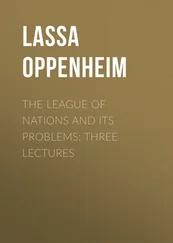Transnational and transcultural convergence and integration that were not so long ago considered leading sociocultural processes of globalization are, in reality, increasingly limited by minimum consumer communication and common consumer standards sufficient for the existence of the individual in a global market sphere and by the extended communicative standard required to work in transnational structures.
While, during the early stages, differentiation – cultural-civilizational, ethnic, political – had a largely spatial character, social differentiation of non-spatial character is dominant during globalization.
Thus, social processes of divergent types, including the direct separation of certain social groups and the increase of barriers among groups, is a vital characteristic of globalization.
The chief mechanism and chief cause of differentiation and divergence is dissolution, the major weakening and loss of social importance of nation states and civil nations as system-building social groups and the degradation and fragmentation of institutions and social groups of a lower order.
Furthermore, differentiation and divergence are direct results of crisis and conflict processes linked to the battle of social agents for the redistribution of increasingly scarce resources, during which not so much separate individuals as whole social groups are being deemed rejects and pushed aside from resources.
In particular, mass marginalization of the population of industrialized countries – first of all, of the middle class, making up the basis not only of production forces and the inner consumer market but of a nucleus of civil nations – is the result of the globalization of economy.
Desocialization of the middle class is a paradoxical but obvious result of continuing technological progress in the context of the global economy and sharpening global limits on natural resources.
Catastrophic alienation of the population of industrialized countries from material production has obvious reasons: steady growth of the productivity of labour against the backdrop of the deficit of labour objects engenders a lack of vacancies. However, these vacancies either move towards newly industrialized countries as a result of the capital outflow or are lost by the indigenous population as a result of mass immigration of the workforce, destroying not only labour markets but also basic social structures of host states, firstly civil nations.
As a result, globalization creates unsolvable social problems for social communities of old industrialized countries, the very golden billion whose interests motivated globalization, objectively leading to the social regression.
The direct reason behind and a leading mechanism of social regression was the crisis of the nation state that reached its development peak in the twentieth century, and the corresponding system-building social group, a civil nation.
Civil nations, and social groups and structures of a lower order included in them, ensured the full cycle of reproduction of the local social community as a closed system, potentially capable of stable self-sufficient development.
The destruction and loss of importance of the civil nation as a structured social majority whose interests and activities ensured extended economic and social reproduction – i.e. progress – led to an increase in the importance of alternatives to nation and religious and ethnic social groups, as well as the separation of corporate social groups and elites.
The systemic social regression happening globally is not exclusively the consequence of the crisis of resources and demographics. The reasons for the growth of stratification and mass desocialization at the beginning of the twenty-first century have a social, group-like nature linked to major changes in the objective interests of elites, separating themselves from local social communities.
For the first time in history (if one does not count the episode with fences in England) the elites are objectively and consciously interested in the quantitative reduction and qualitative lowering of material consumption of dependent social groups. This is manifested not only in actual social policy but on a conceptual level – for example, in the recommendations of the UN Population Fund.
While the elites were previously objectively interested in quantitative increase, material well-being and the civil loyalty of tax payers, at present, the growing separation of dependent social groups from the process of redistribution of society’s wealth is the source of resources for the elites.
The loss of importance of nations and institutions of civil society leads to an increase in the importance of social groups and identities, providing an alternative to the civil nation – ethnic and religious groups which not long ago were considered hold-overs, relics or phantoms of the pre-industrialized era.
The increase in importance of ethnic and religious groups and corresponding forms of group identity and collective consciousness has taken on such a scale and importance that it may be seen as a separate characteristic of globalization.
Social regression, increasingly typical of our times, takes on a systemic, all-encompassing character and may be considered a crucial attribute of globalization and, correspondingly, a central global problem of the social order. 173 173 Safonov, A. L. Globalization as regression: from the nation state to ethnos? // Innovations in economy; project management, education, legislation, sociology, medicine, ecology, philosophy, psychology, physics, technology and mathematics. Articles from International Long-Distance Science and Applicability Conference, April 29—30, 2013, St. Petersburg. St. Petersburg: Kult Inform Press, 2013. – p. 207—212.
The exhaustion of resources and reserves of economic, technical and social progress, typical of the nineteenth and twentieth centuries, objectively leads to social regression. It manifests itself not so much in the relegation of certain countries and regions to the periphery of global development as in the desocialization of large masses of people, the establishment and spread of new social strata separated and removed from social development and social elevators. During the industrialized period, scientific and technological progress, increasing labour productivity, average per capita production of material goods and involving natural resources in the economy led to social progress. At the time of globalization, during which humankind is moving towards the fundamental limits of economic growth, physically predetermined by the finite nature of the planet, objective reasons appear for the social regression of a range of social strata, geographical regions and social institutions.
The very situation of total control of interests stipulating that the fight for the redistribution of physically limited resources is a necessary prerequisite for self-preservation and development means that social regression in all its forms and manifestations, unthinkable in the twentieth century, becomes not only a characteristic, but a dominant trait of the current global development.
This means that a global increase in the importance of ethnic and religious communities against the backdrop of the crisis of civil nations is not only an indicator but also a vital social mechanism of the institutionalization of systemic social regression, society going back to archaic forms of social relations and collective consciousness.
At the same time, even the utmost archaization of social institutions, including zones of long-standing ethnic conflict, is coupled with scientific and technological progress, organically and without contradictions, in the form of the increasingly large use of consumer variants of advanced technologies: cellular networks, digital networks and media technologies, satellite networks and positioning, global transport networks, biological technologies (hybrid and genetically modified plants) and others.
Читать дальше












